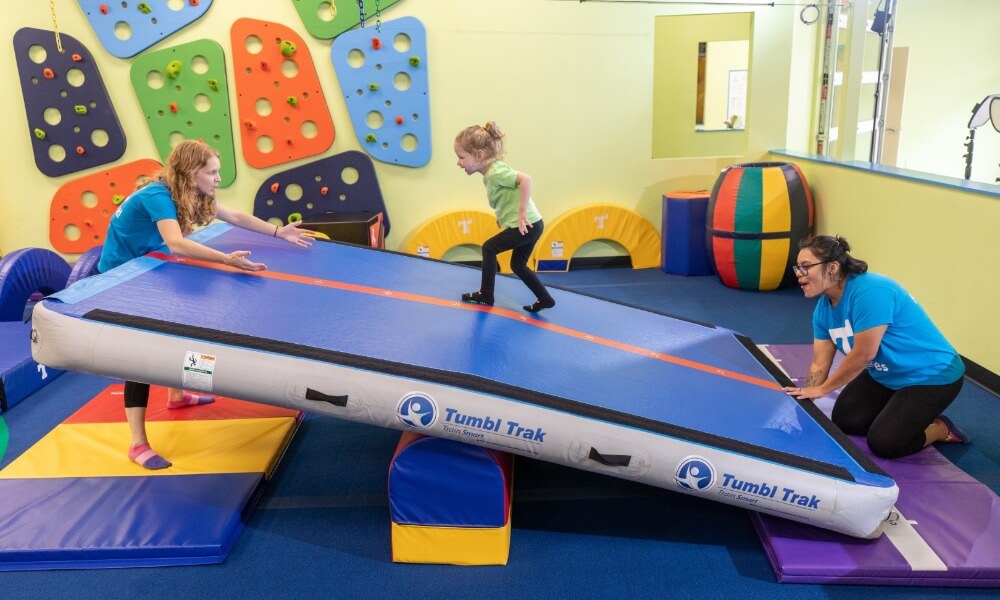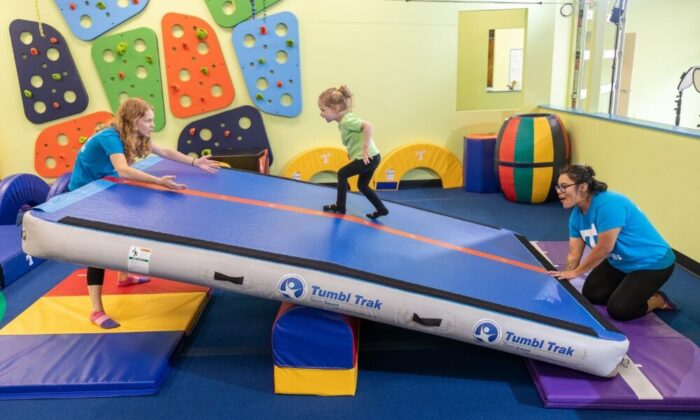
The risks of physical inactivity for children: How does a lack of physical activity impact our children’s development?
August 11, 2021Many recent studies have shown an incremental decline in children’s physical activity over the last two decades. Not that there is any evidence needed. We need only look at our own children or their peers in school and we will see a growing pattern of sedentary behavior. The digital world has in part replaced the physical one. For good and ill.
But, whether the digital world and technology are ultimately beneficial for children is a debate for another time. In this article, we are going to assess the risks of physical inactivity for children.
“Children are less active than before”
There was research done at Essex University, comparing the results of children now with results from children 30 years before. The results of the research indicated that:
- it takes 90 seconds longer for kids today to run a mile than it did before
- 95% of the kids 30 years ago can outrun kids today
- kids before had a 26% greater arm strength
- they also had a 7% stronger hand grip
- children 30 years ago could do 27.1% more sit-ups
Another research indicated that just 24% of children aged 6 to 17 participate in 60 minutes of physical activity every day, which is optimum for that age group.
These upsetting results indicate that children are indeed becoming less active and this issue carries certain risks for their health.
What are the risks associated with the lack of activity at a young age?
To understand the dangers, we need to have in mind that the lack of physical activity doesn’t have the same impact on children and grownups. A developing child is growing their cells much faster than an adult. Some cells form only when we are young and science shows that physical activity is one of the most important factors in determining how both our bodies and minds develop.
More often than not, the consequences of children’s sedentary lifestyles aren’t evident while they are young. Rather, when they reach a certain age, different symptoms start to surface, and the effects start to become clearer. It’s then much harder to mediate these health issues, and in some aspects, practically impossible. The crucial reason is that our bodies achieve a certain form when we are young depending on the type of activities we do. Swimmers achieve one type of body form, gymnasts another, and those who lead inactive lives develop yet another form.
Once we grow older, depending on our diet and activity, we can adjust it, but the core muscle and bone structure will remain similar to what we’ve developed at a young age. It’s the same whether the adjustment is for the good (if we’re gaining muscles and following a healthy diet) or bad (if we’re gaining fat, are inactive, and consume mostly unhealthy food).
One picturesque example is the saggy skin and stretch marks that remain after we lose weight. When we lose weight as children and adolescents, this isn’t a problem because our bodies are still developing. The skin is still flexible and able to grow or shrink without suffering damage. But, when this happens to an older body, the person loses fat, but the excess skin or the marks stay. The same happens to many other organs, although it’s not visible to the naked eye.
Therefore, when children lead unhealthy lifestyles, they set a bad foundation that leads to health issues in the future. When the day comes that they need to do something to help themselves, their bodies aren’t going to be able to completely adapt, and at the very least, some marks are going to be left.

What are the risks of physical inactivity for children?
Obesity
Using computer modeling based on national data, researchers have come to a staggering forecast that more than 57% of today’s children in the US will be obese by the time they are 35.
It is further estimated that by 2030 there will be 254 million obese children and adolescents worldwide.
Obesity is likely going to be the main medical problem because it leads to many other issues, like heart disease, diabetes, joint problems, asthma…
The lack of movement and physical exercise is a direct cause of the obesity rate increase. Setting positive exercise habits in early childhood is, therefore, a prerequisite to a healthy life in the future.
Heart disease & high blood pressure
Just like all of the other health risks, heart disease and high blood pressure can be caused by a combination of several factors. Some of them are stress, unhealthy diet, inactivity, and genetics.
Even though all of these factors play a role, a study called “Health Outcomes and Physical Activity in Preschoolers,” published in the journal Pediatrics shows that physical activity in young children improves blood vessel health, cardiovascular fitness and can prevent the symptoms leading to adult heart disease.
Cancer
Studies have shown that different kinds of cancer may appear, in part due to a lack of physical activity.
People who exercise have a 40% to 50% lower risk of colon cancer, 30% to 40% of breast cancer, but also a lower risk of uterine and lung cancer.
Instilling regular exercise habits at a young age can ultimately result in more exercise as an adult, which will keep the body healthy.
Type 2 diabetes
A sedentary lifestyle is one of the main causes of diabetes. Although it usually happens later in life, the roots of the disease start with the habits adopted in early childhood.
It has now been well established that regular physical activity improves blood glucose control and can prevent type 2 diabetes later in life, even if there is a genetic predisposition for it. It further improves blood pressure and reduces the risk of cardiovascular events and mortality.
Osteoporosis
Children who build optimal amounts of bone mass have a lower risk of fractures during growth. With age, the bones naturally lose their density and are more fragile and easily broken.
However, obtaining maximal bone mass in childhood can also prevent the development of osteoporosis and improve bone strength later in life.
Research has further shown that physical activities of higher intensity lead to higher bone mass index and reduce bone loss over time. This consequentially lowers the risk of bone health issues and osteoporosis in adulthood.

How does physical activity affect children’s physical development?
For children, there are numerous benefits to children’s physical development.
- Bodies get stronger – Regular physical activity strengthens the body, its core, joints, and tendons.
- More muscle fiber – Children develop more muscle fiber, which also helps maintain healthy bones and joints.
- Bones form and thicken– Skeleton forms permanently depending on the type of activity (or lack of it). Bone mass increases.
- Increase of blood cells – For cells in our whole bodies to stay healthy and well-nourished, they need oxygen. Blood cells carry it through our organism.
- Lungs capacity increases – High-intesity activities, especially anaerobic workouts, have been proven to increase our lung capacity. We start using a higher percentage of our lungs.
- The heart & cardiovascular system improves – Contrary to the popular opinion, the heart issues start at a young age – with arteries being stiffened. Research has shown that children who exercise daily have clearer arteries which is a prerequisite of a healthy heart later in life.
How does physical activity affect children’s mental development?
Often overlooked is the impact physical activity has on children’s mental development.
- BDNF – Brain-Derived Neurotrophic Factor as a neurotrophin – This is a protein that affects the production and survival of neurons. Recent studies have shown that children with regular physical activity have elevated levels of BDNF in their brain, which makes them able to learn and understand faster.
- Depression and anxiety – Through a range of studies involving children ages 8-19, it has been established that physically active children reported fewer signs of depression and anxiety. This has also been neurologically confirmed since children with regular physical activities, especially high intensity activities, had lower cortisol secretion.
- Less medicine – Implicitly, this means less medication for children to fight depression and anxiety and it also means less medication for them as grownups. It has been proven that the BDNF levels, for example, aren’t just temporary spikes in brain functionality. Children with regular activity gain a permanent increase in BDNF level.
- Improved creativity and problem-solving skills – Research further showed that children who regularly trained or had physical activities had enhanced focus and improved creativity when searching for solutions to different problems.
Tumbles – a children’s fitness franchise with a purpose
Tumbles understands how important it is for children to be physically active from a young age. Its mission is, through its unique gym and fitness programs, to permanently imprint the love for physical activity in children, so that they continue to lead healthy lives long after childhood and adolescence. In this manner, Tumbles fights the risks today’s youth faces in the future.
If you too would like to share this purpose and contribute to society in fighting these issues, Tumbles is also a franchise, and open to any franchisees who share the same passion as we do. We’re inviting you to meet us at any of our locations, or simply feel free to reach out to Tumbles.
 +1 833 496 7836 (833 GYM STEM)
+1 833 496 7836 (833 GYM STEM) franchise@tumbles.net
franchise@tumbles.net





